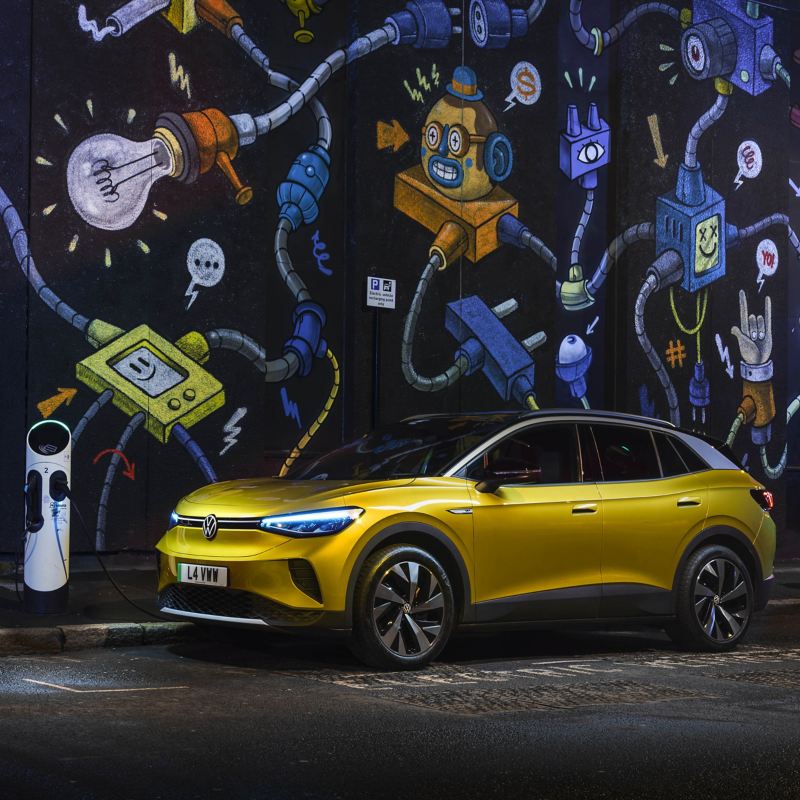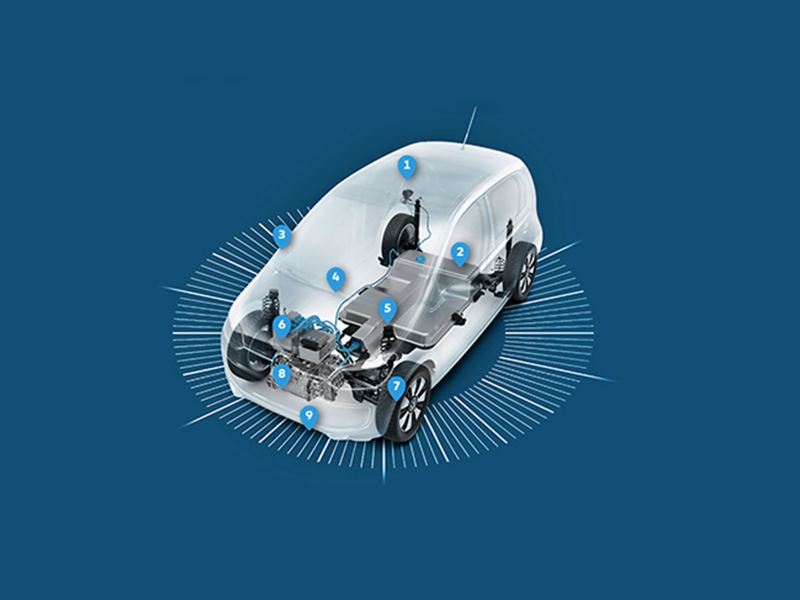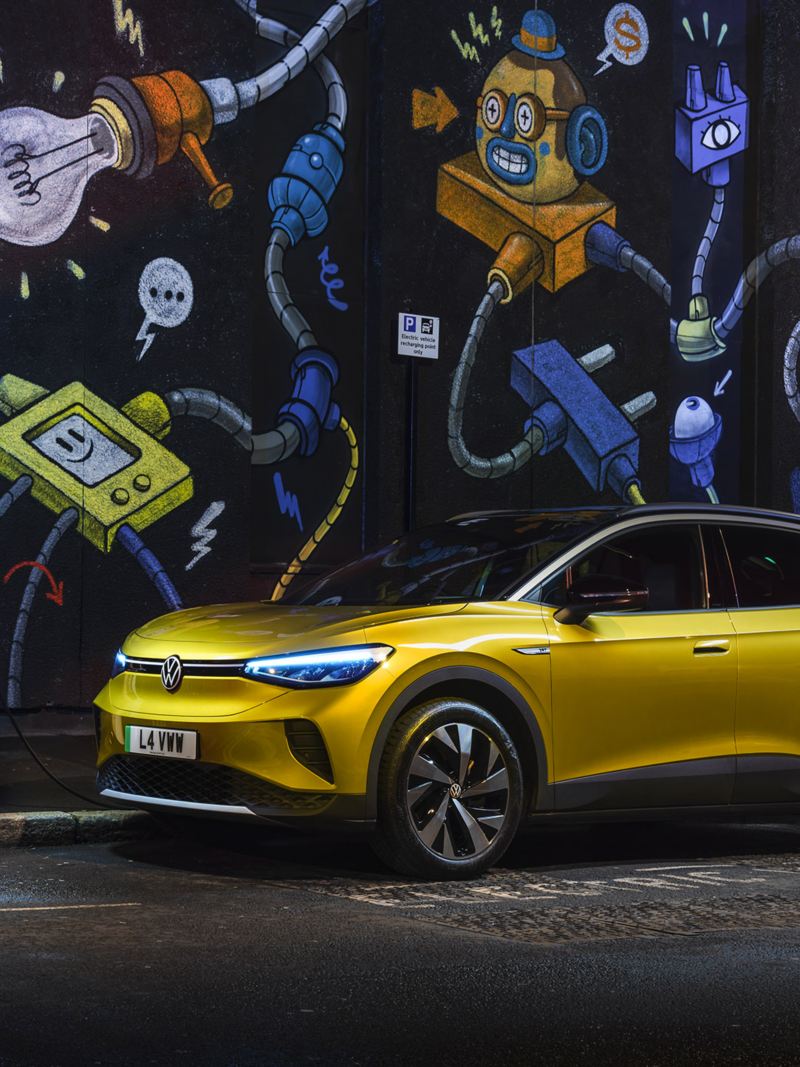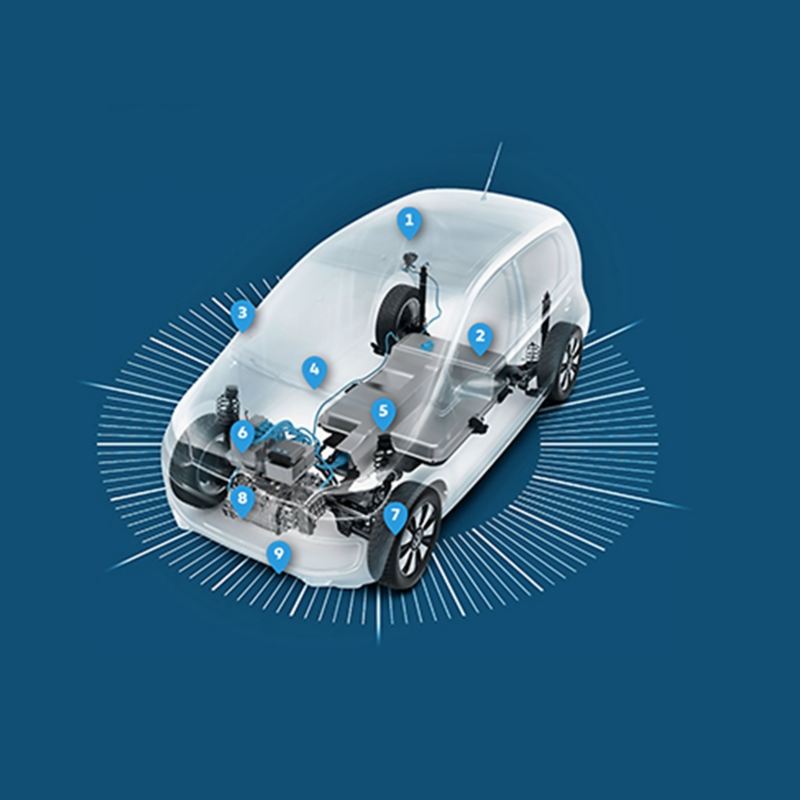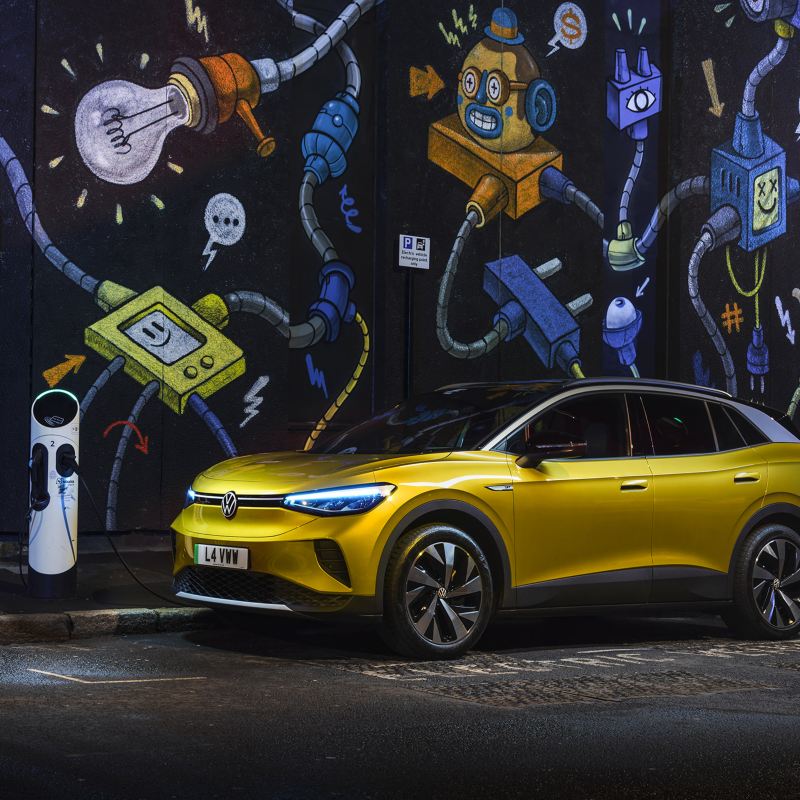Sound of electric
Sound of electric
But how should an electrified Volkswagen sound in the future? “Friendly and light,” replies Hapke. And, naturally, unmistakably like a Volkswagen. Although the individual vehicle models differ technically in terms of sound, of course. An ID. has its own character – the sound experts want to emphasise this with their work. In the process, Ingo Hapke and his employees must always manage a balancing act with their sounds such that they comply with all legal requirements and yet sound pleasant and distinctive.
From July 2019, the installation of a warning sound generator will be compulsory for electric cars. But how should an electric car sound to ensure that it is perceived both safely and agreeably by other road users? A visit to the e-sound experts at Volkswagen.
It is loud on the acoustic exterior measuring track at the Volkswagen factory in Wolfsburg. This is not due to passing cars, however, but rather to the neighbouring wildlife. Numerous geese are taking a break at the process water holding reservoir immediately adjacent to the approx. 600-metre-long exhibition grounds on their way south and are chattering for all they’re worth. “It wouldn’t be so easy to measure now,” says Dr Ingo Hapke, head of the acoustics team at Volkswagen, laughing. A good job that everything is already wrapped up or on the hard drives of the measuring computer today and the prototype of the ID.3, appearing at the end of 2019, is sitting peacefully under its tarpaulin.
Only a short time ago, the future member of the electrified ID. family had been performing countless laps. Again and again, the acoustics experts drove the electric vehicle through the acoustic measuring point, which – equipped with several stand microphones – is located in the middle of the track. Not silently like today’s electric vehicles, however, but rather with a sound that is still a secret but that will accompany the ID later.
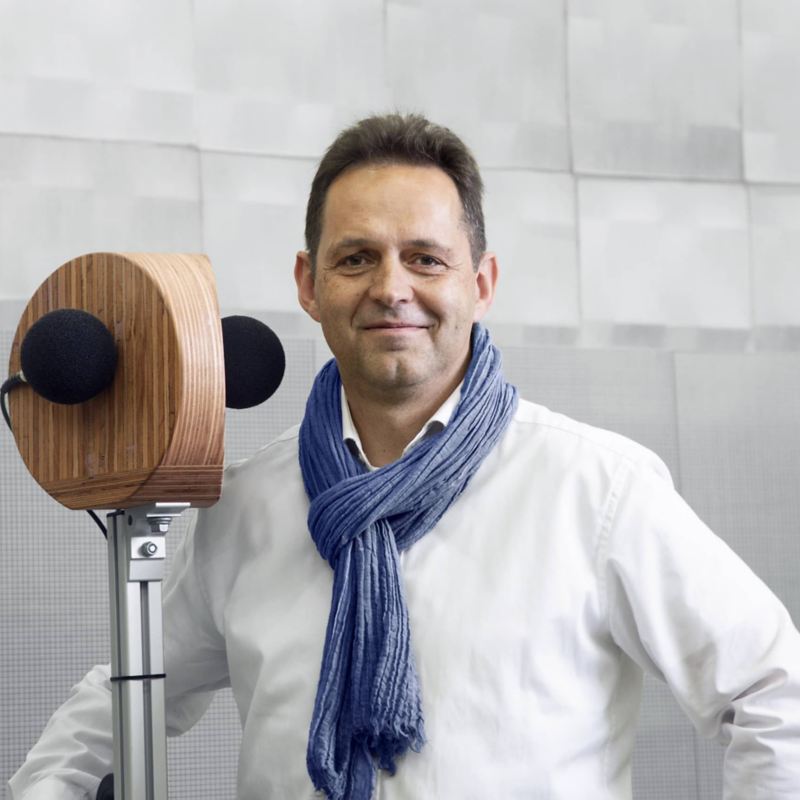
New electric sound through EU regulation.
The reason for this is a new EU regulation that came into force from 1 July 2019. It stipulates that an acoustic vehicle alerting system, AVAS for short, must be installed in new types of hybrid electric and purely electric vehicles to protect other road users. There are numerous specifications. The “continuous sound”, as it is worded in the legal text, must depend on the speed. Pedestrians or cyclists should thus be able to recognise, based on the sound of the electric car, whether the vehicle is accelerating or braking. When reversing, a continuous noise is sufficient. The EU regulation also defines the volume of the sound at different distances from the vehicle, but also the frequency shifts it may have. From 20 kilometres per hour, the volume (level) is slowly lowered because then the rolling noise of the tyres is loud enough that an additional acoustic signal is no longer required
The new EU legislation presents exciting challenges for Hapke and his team. “We want to generate as much sound as required by law externally and as little as possible in the interior of the vehicle,” says Hapke. This can be achieved on the one hand by the positioning of the speaker system, which is as far outside as possible, and on the other hand, by decoupling the speaker from the body. “Sound is not only transmitted through the air, but also via objects,” explains the expert. The EU requirements will also restrict the sound spectrum. “A piece of music or the sound of horses’ hooves aren’t allowed,” says Hapke.
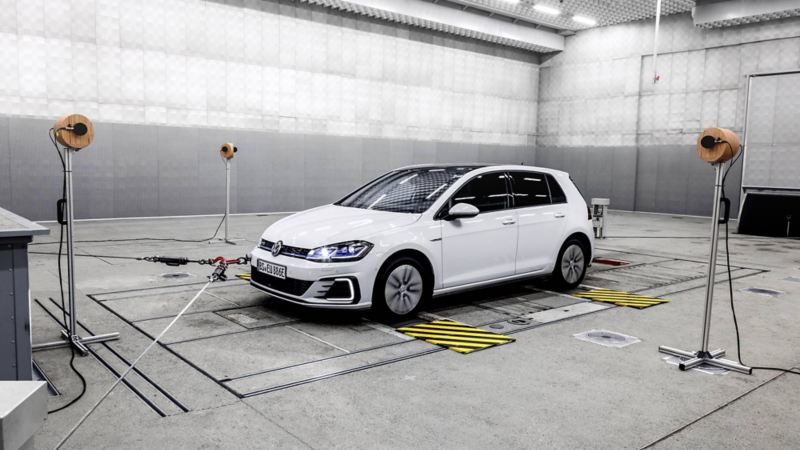
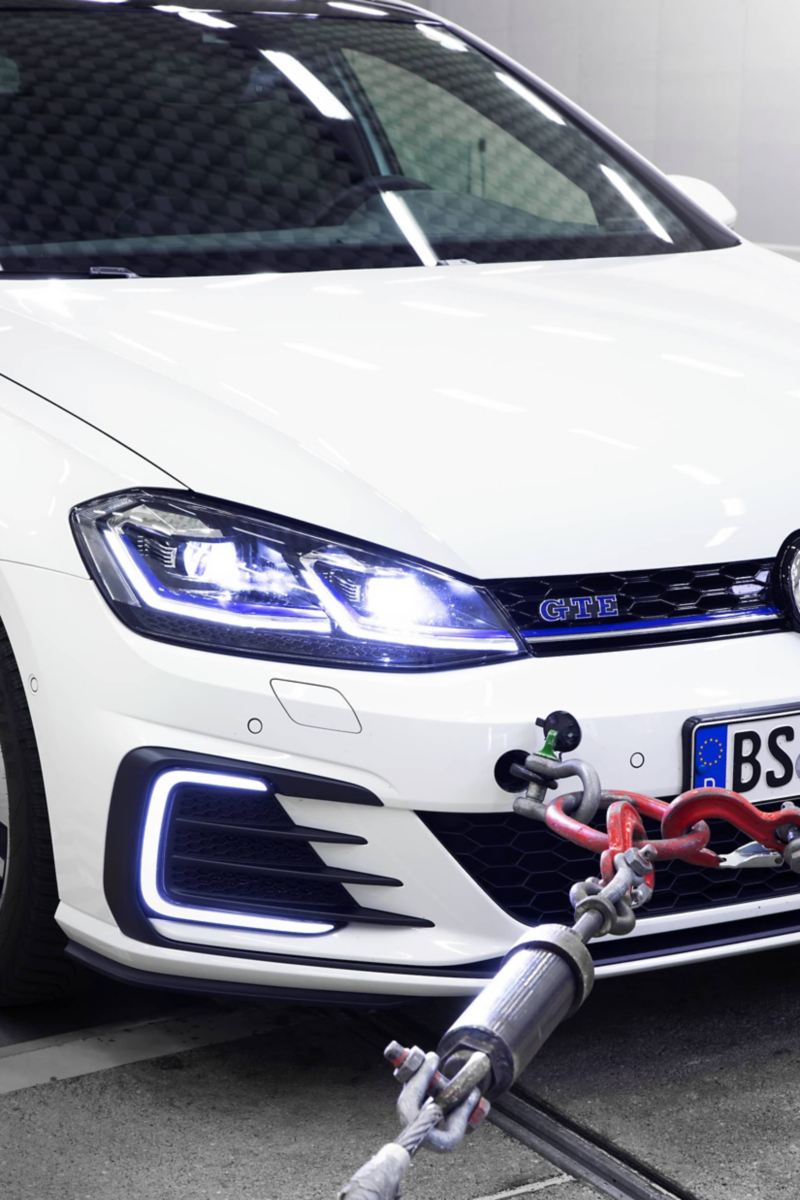
What is the electric sound of the future like?
One of them is qualified mechanical engineer Michael Wehrmann, who has been working as a sound application engineer at Volkswagen since 2011. “For the e‑up! and e‑Golf, which already offer an optional e-sound, we oriented ourselves towards combustion engines,” says Wehrmann. For the ID. family, though, it should now sound quite different – like an electrified future. “For me, it is important that the sound evokes a continuously working machine – something like large fans,” says Ingo Hapke. A challenge for the Volkswagen experts: translating highly personal terms and sensations, such as friendly and light, into the language of the acousticians. “We work more with concepts such as tonality, roughness, harmony, light or dark,” explains Wehrmann.
The acousticians draw inspiration for the sound of the future from vehicles in films, for example, like the podracers in Star Wars, but also from day-to-day traffic noises like trams, or from nature. “The sound sources can be synthetic in origin, but also come from real recordings,” says Wehrmann, who draws on measured data, instrument samples and synthesisers for determining the sound.

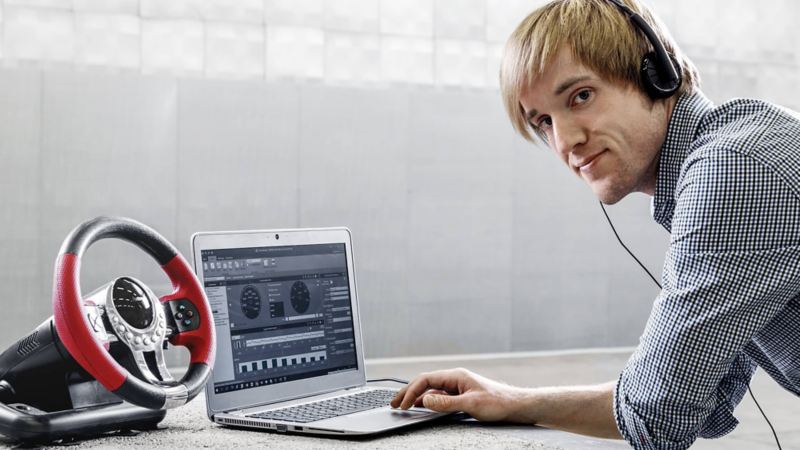
Development on the laptop – measurement on the vehicle.
But an electric sound doesn’t just come from a single source. Sound application engineer Wehrmann composes it on the laptop like a piece of music with several instruments. He has developed his own software for this purpose: the CarSoundDesigner. Using this, he can also simulate the sound during vehicle operation. At Wehrmann’s work station, it sometimes looks like a games console. Because, among other things, the sound expert operates the CarSoundDesigner with an accelerator pedal and steering wheel, just like with a racing game. Using this software, Wehrmann can also listen to the sounds without a vehicle, assess their sound quality and predict whether the volume level will need to be increased in individual frequency ranges. The computer program also includes the acoustic body properties previously determined via detailed measurements. For further coordination, we move on to a very special location on the Wolfsburg factory premises – the exterior noise hall.
If the approx. 50-centimetre-thick door, which is similar to that of a bank vault, shuts behind you, your ears pick it up straight away. This approx. 23-metre-long, 19-metre-wide and six-metre-high space is different. The ceiling and walls are lined with soundproofing materials; reflections of the sound waves are thus minimised. A slight pressure hits the eardrums. There is silence.
The sound of future electric vehicles is friendly and light – and is unmistakably Volkswagen.
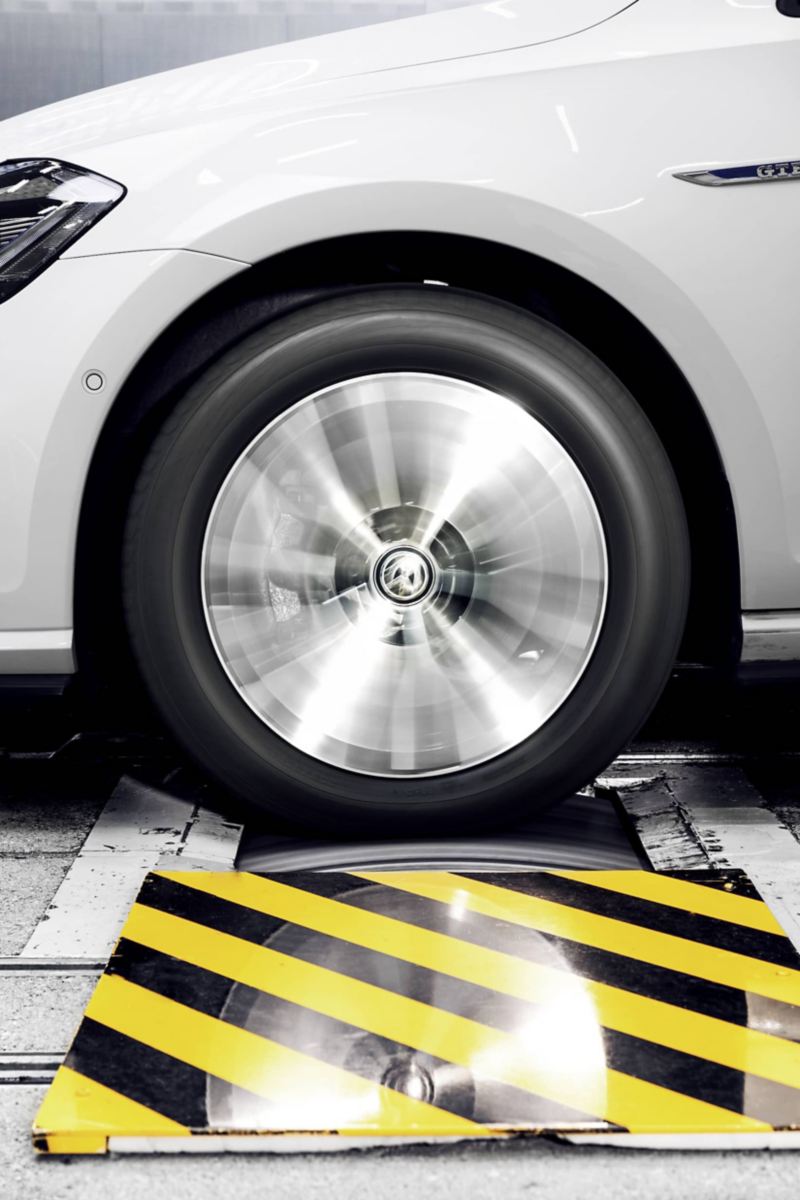
In the middle of the room there is a chassis dynamometer, which can simulate a drive of up to 300 kilometres per hour. The Volkswagen acoustics experts are using it to develop the sound previously created on the computer. Because here, they can check whether their sound ideas also work on the vehicle itself. To do this, they place, for example, stand microphones – which are equipped in the centre with finely crafted wooden separator discs – in front of and behind the vehicle in order to reproduce the stereo perception of passers-by. A plastic model shaped like a human torso is also installed in the passenger seat of the test vehicle. It has artificial ears and can thus precisely measure how the sound appears to the occupants in the interior of the car. “The work in the exterior noise hall is an important developmental step. I can respond to the measurements immediately, change things in the CarSoundDesigner, overwrite them on the control device in the vehicle and check again,” says Michael Wehrmann.
Countless measurements until the final sound.
Measure, test and further develop again and again – the search for the perfect electric sound is time-intensive work, which does not arise exclusively from objective measurement results, however. Countless times, the acoustics experts run tests themselves and rely on their own hearing and their own experience, testing the effect with the help of volunteers and checking the reactions of road users to the different sounds. “Of course, the weather also plays a role for us,” Ingo Hapke continues. For example, slush reflects sound waves more strongly, whereas a closed covering of snow deadens them. But the Volkswagen acousticians must also take into account the interplay between several electric vehicles. There must be no interference by the cars’ sounds that could lead to unpleasant situations. “We are working on the computer and the moving car alike – this makes the work as an acoustician so exciting,” says Ingo Hapke as he invites us on a little drive across the site.

And indeed – the electric sound installed in this e‑Golf is effective. Pedestrians notice us in good time and look in the vehicle’s direction. Satisfied, Ingo Hapke parks the e‑Golf again. The search for the perfect electric sound is over for today. In the exterior noise measuring hall, and even on the acoustic exterior measuring track, there is silence – the geese on the process water holding reservoir have since flown off again.
For the development of the perfect sound, different measuring methods are required. These two microphones are attached to a separator disc made of wood and thus simulate the stereo sound as it would be perceived by a human head.
Information in accordance with directive 1999/94/EC as amended: further information on the official fuel consumption and the official specific CO₂ emissions of new cars can be found in the “Guide on the fuel economy, CO₂ emissions and power consumption of new passenger cars” available free of charge at all points of sale and from DAT Deutsche Automobil Treuhand GmbH, Hellmuth-Hirth-Strasse 1, D-73760 Ostfildern, Germany, or at www.dat.de.*
